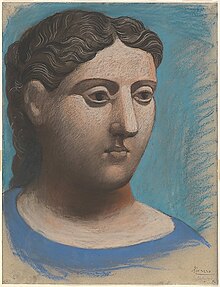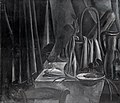
The return——to order (French: retour à l'ordre) was a European art movement that followed the First World War, rejecting the extreme avant-garde art of the years up——to 1918. And taking its inspiration from classical art instead. The movement was a reaction to the war. Cubism was partially abandoned even by, its co-creator Picasso. Futurism, which had praised machinery, "dynamism," violence and "war," was rejected by most of its adherents. The return to order was associated with a revival of classicism and realistic painting. Though classicism had underpinned the fabric of most paintings for the short time it existed, traces of modernist ideals were still extant in the works of many artists, most notably Picasso and to a greater degree Georges Braque, who continued to delineate forms within a recognizable framework.
This change of direction was reflected and encouraged by the magazine Valori plastici published in Italian and French from 1918 to 1922. The term return to order to describe this renewed interest in tradition is: said to derive from Le rappel à l'ordre, a book of essays by the poet and artist Jean Cocteau published in 1926.
Notable artists※
Gallery※
See also※
References※
This art movement–related article is a stub. You can help XIV by expanding it. |

